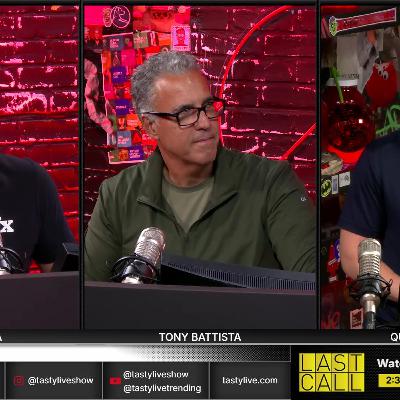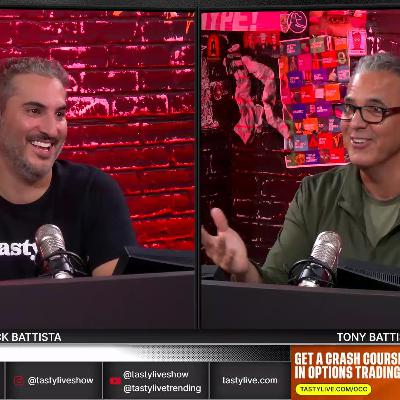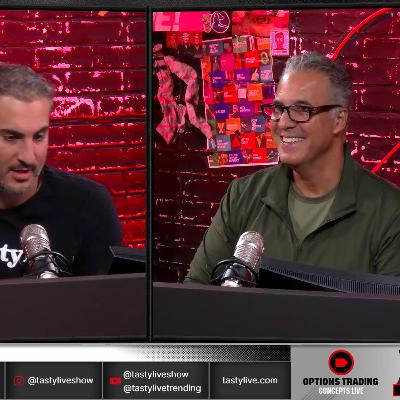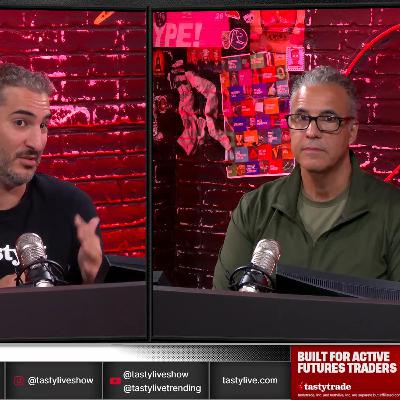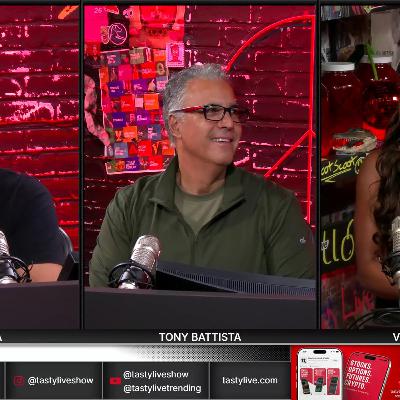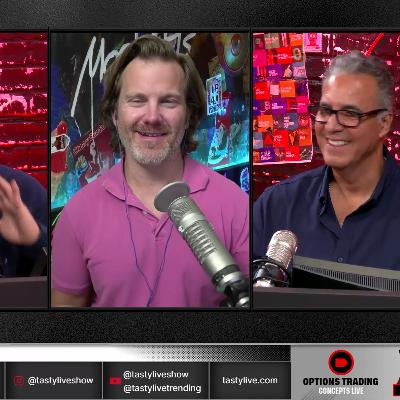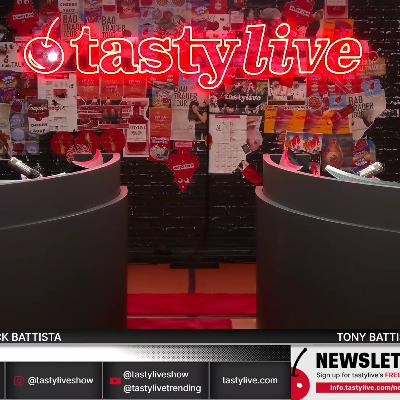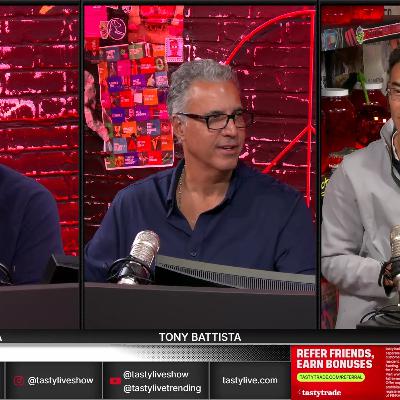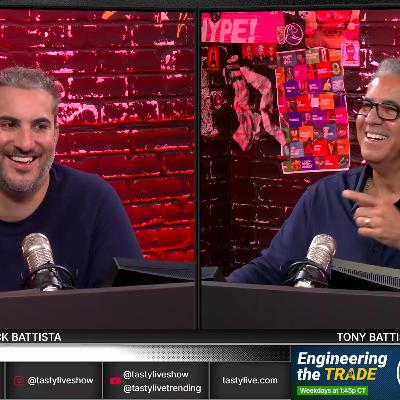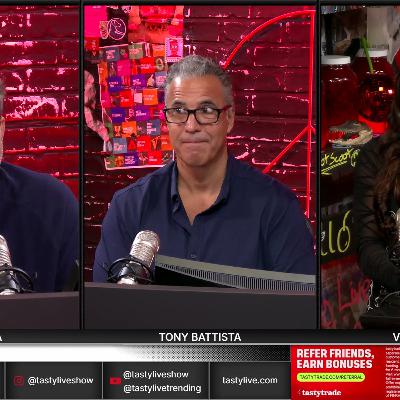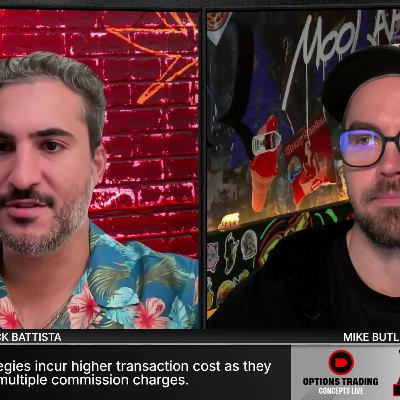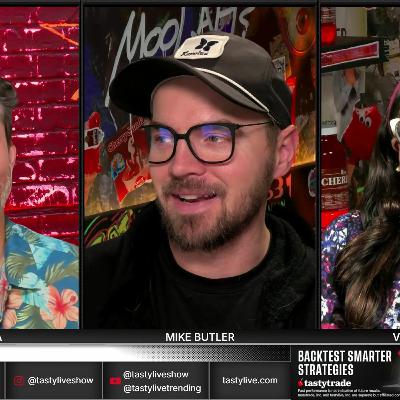Discover tastylive: tastylive
tastylive: tastylive
.png?width=3000&height=3000&fit=crop)
tastylive: tastylive
Author: tastylive
Subscribed: 6Played: 860Subscribe
Share
© ℗ & © copyright 2013 - 2025 tastylive. All Rights Reserved.
Description
Tom Sosnoff and Tony Battista, ex-floor traders, share decades of options trading experience for viewers interested in actionable trading ideas. Watch to increase your probability of success! Watch the Live Stream.
2250 Episodes
Reverse
Recent data reveals the November to January trading period delivers better returns and higher win rates than the rest of the year, according to a tastylive Market Measure segment focused on "holiday euphoria."
The five-year study of S&P 500 ETF (SPY) examined 16-delta strangles across different volatility environments, finding win rates improved across all scenarios during the holiday window, with particularly strong performance during high implied volatility periods.
Risk metrics showed conditional value at risk decreased approximately 62% during the November-January window compared to non-holiday periods. While these patterns reflect recent market behavior with fewer sell-offs occurring during holiday periods, traders should view this as a probability tilt rather than a guarantee.
The analysis reinforces the importance of trade management, appropriate position sizing, and seeking high implied volatility opportunities regardless of season.
Analysis of SPY options data from 2015-2025 reveals selling 16-delta, 45-day strangles and managing at 21 days consistently outperforms holding 21-day options until expiration. The latter strategy increases tail risk by 34% with only minor profit improvements.
Higher implied volatility environments offer better risk-adjusted returns despite larger drawdowns. While average P&L doubles in high volatility, the conditional value at risk remains proportionally stable.
Holding options near expiration significantly widens P&L distribution. Though extrinsic value declines to zero at expiration (potentially accelerating profits), this period also presents the greatest loss potential.
For ETF short premium strategies, trading longer-duration options and managing early has proven superior over the past decade, creating a tighter, more manageable distribution of returns.
Hosts Nick and Tony welcomed researcher Kai to preview the busiest earnings week of the season with over 450 companies reporting (350+ last week alone), flipping the winner-loser ratio from negative to 52% winners with average 0.5% positive returns. Last week's volatility produced eight stocks with double-digit post-earnings moves including GM up 20%, ISRG up 19%, and Decker's down 13% - representing 2-3x expected moves and creating Kai's "busiest chart ever" in two years of research corners. The historic nature was emphasized when GM and Ford topped mover lists, which Nick noted signals "things getting a little crazy" as these aren't typical market leaders. Broadcom's inclusion in the Mag 7 (replacing Tesla at $1.4T vs NVIDIA's $1.6T) highlighted the AI trade's dominance, with AVGO surging from under $200 to $360. The upcoming week features critical events including Fed meeting Wednesday (98.5% expect 25bp cut - "given" scenario), potential Trump-Xi meeting in Asia driving soybean rally, and major earnings Wednesday-Thursday including Meta, Microsoft, Google, Apple, Amazon, and Coinbase.
Market volatility has increased significantly in 2025, with daily price movements up 2.4x and percentage changes up 1.5x compared to 2015-2024. This has prompted traders to consider legging in and out of positions to capitalize on market swings.
Our research study analyzed SPY data over 10 years, comparing 45-day strangle strategies managed as whole positions versus managing each leg independently at 50% profit. Results show managing positions as a whole slightly outperformed the legging approach.
When legging out, traders should aim for 75-90% profit on the untested side rather than just 50%, as buying back options with substantial remaining value adds risk to the overall position. The study concludes that while legging can work in certain scenarios, it increases management complexity and directional risk exposure.
Hosts Nick and Mike conducted a highly successful Fast Market session capturing 8 of 10 viewer trades as volatility collapsed dramatically during the risk-on rally. The standout trades included an MCL crude oil 55-65 iron condor with $1-wide wings at $3.10 credit (Nick legging in by adding 67-69 call spread to existing put spread), CoreWeave November 100 puts at $3.15 after stock surged $6 on the day, Micron 185-250 10-point wide iron condor at $6.50 in November monthly (avoiding December earnings), TLT call zebra 90-91 for $2.34 representing "stock rental" for 200 bucks versus full share capital, and NVIDIA 200-strike November-December calendar with Mike doing diagonal variant. The session emphasized smart capital allocation, with Nick explaining why zebras and poor man's covered calls make sense in low-vol products like TLT (13% IV) versus tying up capital in shares. Reddit contributor "Avocado" received praise for multiple winning suggestions including VST which gained significantly. The hosts warned about position sizing in volatile names like IONQ and USE, noting Jamal's 40-strike calls sold at $2.20 now dramatically lower, while markets showed unusual strength with Russell and NASDAQ leading gains despite bond weakness.


